Jianshui Ancient Town Posted by sasha on Jul 28, 2015 in Culture
When it comes to traveling in Yunnan, many people stick to the beaten path – Kunming, Dali, Lijiang, Tiger Leaping Gorge, and Shangri-La. These places are well documented in travel books such as Lonely Planet, the tourism industry of each is well developed, and it’s basically a straight line with convenient modes of transportation all along the way. While these places are all well and good, there’s lots more to see in Yunnan once you get off the usual tourist trail. One such place is the ancient town of Jianshui (建水 – jiàn shuǐ), located just a 4-hour train ride from the capital. With a pleasant downtown area, quite a few cultural sights, and some of the tastiest rice noodles you’ve ever tried, this little city is well worth a visit and makes for a great jumping off point for more adventures in the southern part of the province. Let’s take a look at all there is to do in Jianshui:
Confucius Temple
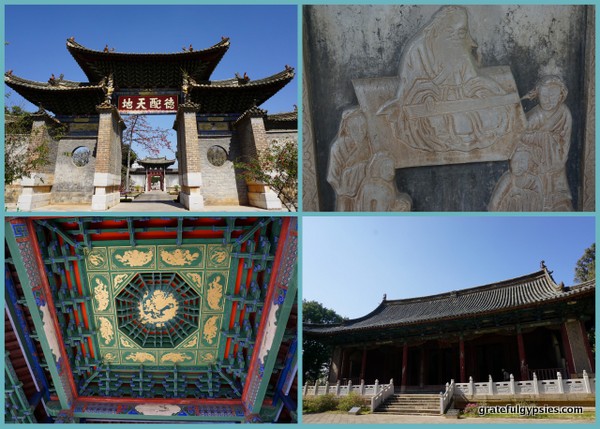
Confucius Temple
You may be surprised to hear that this little city in the southwest of China is actually home to the country’s third largest Confucius Temple (孔庙 – kǒng miào), behind only the one in Master Kong’s hometown of Qufu and the famous one in Beijing. Jianshui has actually been a center of Confucian studies for hundreds of years, so it makes sense why they have such an epic temple there.

Panoramic view of the little lake.
In addition to the temple complex, there’s also a small lake here that makes for a great place to stroll around for a while. On our visit, we were fortunate enough to see the lantern festival getting set up, although we didn’t get the chance to see it lit up at night.
Zhu Family Gardens
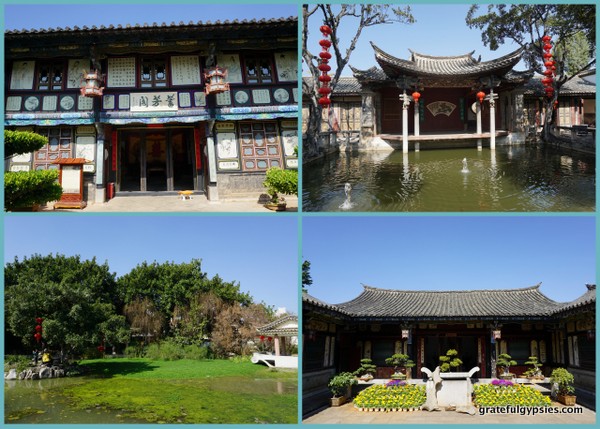
Get lost in the gardens.
Perhaps the highlight of visiting Jianshui are the Zhu Family Gardens (主家花园 – zhǔ jiā huā yuán), a Qing Dynasty era complex built by a wealthy family full of residences, courtyards, ponds, ancestral halls, and of course gardens. The grounds are sprawling – 20,000 square meters – and a bit maze like, so it’s easy (and fun) to get a little lost.
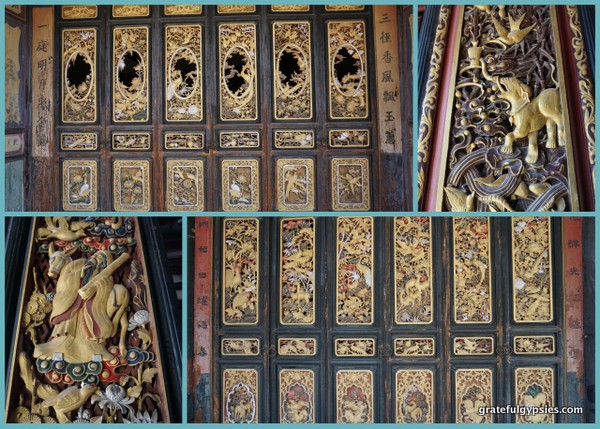
Intricate woodcarvings abound.
The entire complex is beautiful and well-maintained, but the highlight of a visit here is checking out the incredibly intricate and detailed wood-carvings that adorn the doors. Get up close to really admire them, and you’ll be amazed by what you see.
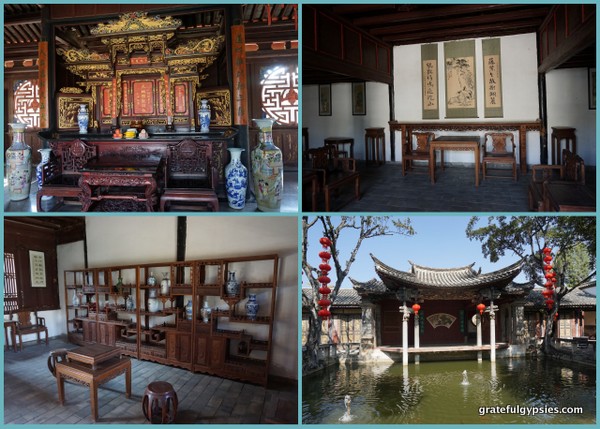
A few rooms throughout the gardens.
Many of the rooms feature antique furniture, pottery, and lovely Chinese scrolls, so make sure you poke your head into all of them. For such a beautiful and historic sight, it’s amazing how small the crowds are here. Perhaps the 50 RMB entrance fee deters some of the larger (and more annoying) tour groups, which is all the better for individual travelers!
Chaoyang Tower
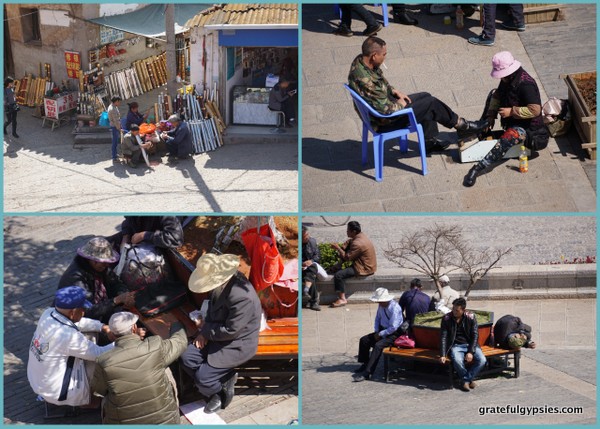
See the city from atop the tower.
Right in the center of town is the Chaoyang Tower (朝阳楼 – chāo yáng lóu), a preserved city gate that now serves as a viewpoint and small exhibition center. For 10 RMB, you can head to the top for a bird’s-eye-view of the action down below – locals playing cards, getting shoe shines, dancing, or just napping on a bench. On our visit, there was a great photo exhibition featuring pictures taken by a French photographer in the early 1900s.

Jianshui as seen from above.
Swallow Cave
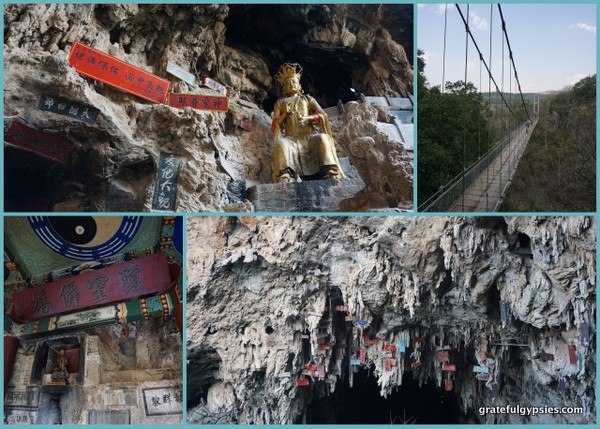
Walking up to the cave.
Although it’s not exactly located in Jianshui – it’s 25 kilometers outside of town – the impressive Swallow Cave (燕子洞 – yàn zi dòng) makes for an easy and fun day trip out of the city. On the walk up to the cave, you can check out a few Buddhist shrines tucked away in the rocks. When it comes to exploring the actual cave, visitors can choose to walk through themselves or pay for a ride on a cartoonish dragon boat.
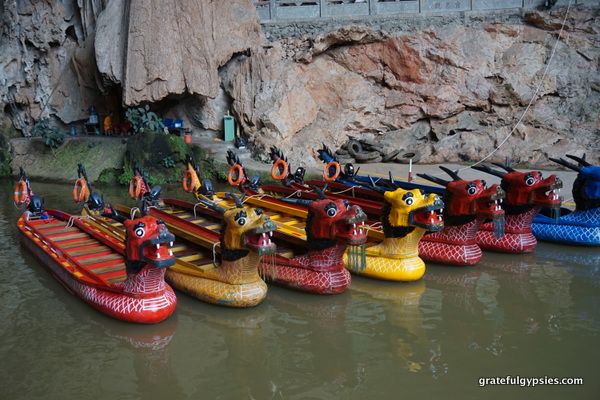
Silly dragon boats.
The cave is home to white-rumped swiftlets who migrate there and build nests in the cave walls. Always on the hunt for something tasty, locals have perfected the art of climbing around the cave in order to collect the nests for their birds nest soup (鸟窝汤 – niǎo wō tāng). These days, they’re only allowed to go collect the nests one day a year – on August 8th, a very auspicious day according to China.

Lots of neon, of course.
As is the case with many caves throughout China, the rock formations are awash in a rainbow of neon lights. Some call it cheesy and garish, but I call it cool. Love it or hate it, the multitude of colors spread across the cave makes for quite the scene.
Around Town
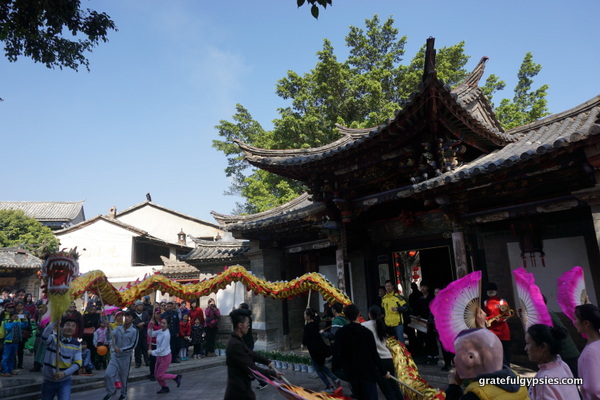
Dragon dance outside of the gardens.
Walking around the center of the city, you’ll see traditional buildings housing modern shops – a familiar sight across China. As with many places, Jianshui seems to be stuck somewhere between the past and the future, but not quite in the present. Wandering down the random alleyways off the main streets, you’ll find some of the ancient wells that local people still use to this day to retrieve water for cooking and drinking. Rumor has it that the well water is the reason behind Jianshui having what many Yunnan folks claim to be the best rice noodles and stinky tofu in the province.
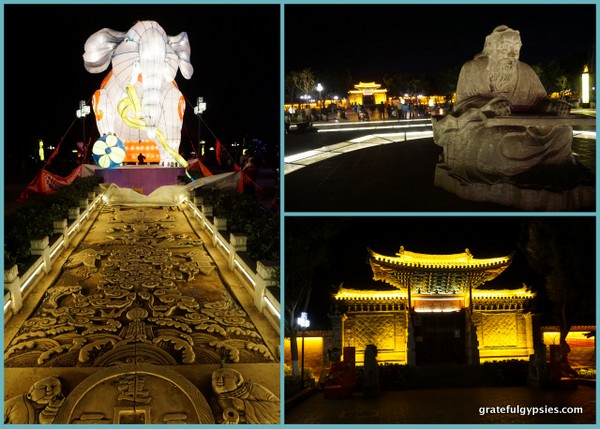
The square lit up at night.
In the evenings, people gather in public squares to chat, play games, or dance. The area around the Confucius Temple comes alive once the sun goes down, and it’s lit up quite nicely after dark.
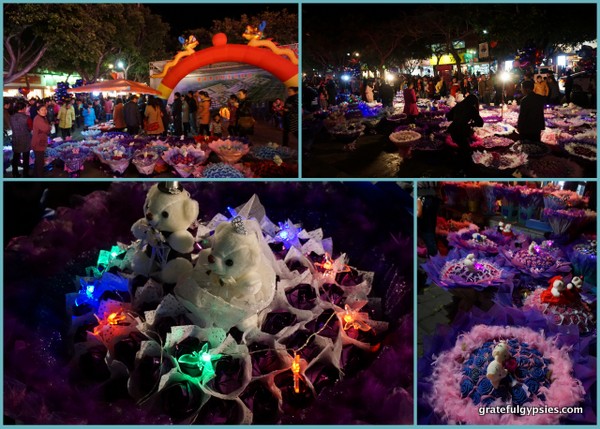
Valentine’s Day in China.
Our visit just so happened to coincide with Valentine’s Day, which you would have guessed was a traditional Chinese holiday given the amount of vendors out hawking things like flowers and teddy bears. It may not be a Chinese holiday, but people sure jump at the chance to make a few kuai by preying on sucker Chinese guys who will do just about anything to win a lady. Can’t say that I blame them – the ratio of men to women is pretty awful in China these days and you gotta do what you gotta do.
Accommodation
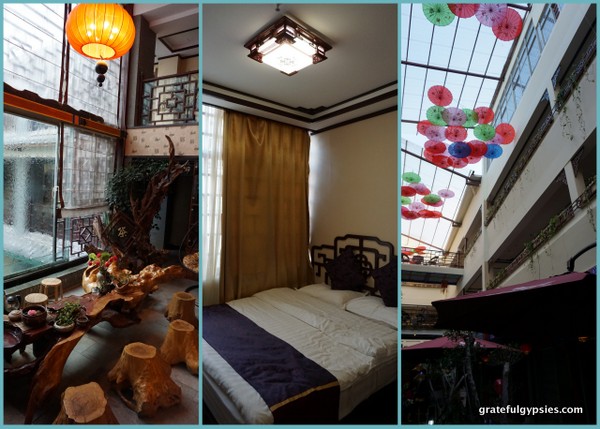
Lin’an Story Inn
Despite the fact that it’s not a hugely popular tourist destination, Jianshui has a wide range of hotels and guesthouses throughout the city. Most of them are on the central, tree-lined Lin’an Road, so it should be easy to find a room even if you just show up unannounced. We stayed at the Lin’an Story Inn, which was nice, comfortable, and had some really interesting seating areas.
As you can see, there’s plenty to do in Jianshui to warrant a short trip there. If you dedicate more time, there’s a lot more to do in the surrounding area as well – ancient villages and stunning traditional bridges are just a short drive away. There’s more to Yunnan than what you read in your guidebooks, so get out there and see some of it!

Build vocabulary, practice pronunciation, and more with Transparent Language Online. Available anytime, anywhere, on any device.
About the Author: sasha
Sasha is an English teacher, writer, photographer, and videographer from the great state of Michigan. Upon graduating from Michigan State University, he moved to China and spent 5+ years living, working, studying, and traveling there. He also studied Indonesian Language & Culture in Bali for a year. He and his wife run the travel blog Grateful Gypsies, and they're currently trying the digital nomad lifestyle across Latin America.




Leave a comment: